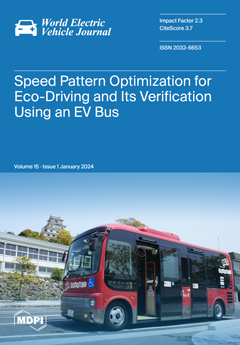Open AccessArticle
Numerical Investigation of Heat Production in the Two-Wheeler Electric Vehicle Battery via Torque Load Variation Test
by
Hariyotejo Pujowidodo, Bambang Teguh Prasetyo, Respatya Teguh Soewono, Himawan Sutriyanto, Achmad Maswan, Muhammad Penta Helios, Kanon Prabandaru Sumarah, Bhakti Nuryadin, Andhy Muhammad Fathoni, Dwi Handoko Arthanto, Riki Jaka Komara, Agus Prasetyo Nuryadi, Fitrianto, Chairunnisa and I.G.A. Uttariyani
Cited by 1 | Viewed by 1372
Abstract
Experimental studies were conducted to investigate the effect of varying torque loads on the temperature distribution on the surface of lithium-ion batteries (72 volts–20 Ah) in real commercial two-wheeler electric vehicles as part of our previous research. An electric vehicle engine was installed
[...] Read more.
Experimental studies were conducted to investigate the effect of varying torque loads on the temperature distribution on the surface of lithium-ion batteries (72 volts–20 Ah) in real commercial two-wheeler electric vehicles as part of our previous research. An electric vehicle engine was installed in a dyno testing laboratory and used as the main load for the battery. Ambient temperature and relative humidity were controlled using an air conditioning system. The test results are presented as surface temperature distributions on each side of the battery at various torque loads. The highest temperature on the battery’s surface was found to be approximately 40 °C at a torque load of 100%. Unfortunately, the heat generated by the battery during testing could not be measured for further research. This paper presents a numerical study of battery heat generation at 100% torque load using Ansys Fluent 2020 R1©. This tool is employed to calculate the heat flux from the battery surface to the ambient air. The CFD tool was initially validated against available experimental data and commonly used correlations for natural convection along a vertically heated wall. Good agreements between the current predictions and experimental data were observed for laminar flow regimes. Convective heat transfer between the battery surface and ambient air was simulated. The results indicate that the commonly used heat transfer correlation for vertical plates accurately predicts the heat transfer rate on the battery surface, and it was found that the heat generation rate is 1199 W/m
3.
Full article
►▼
Show Figures





